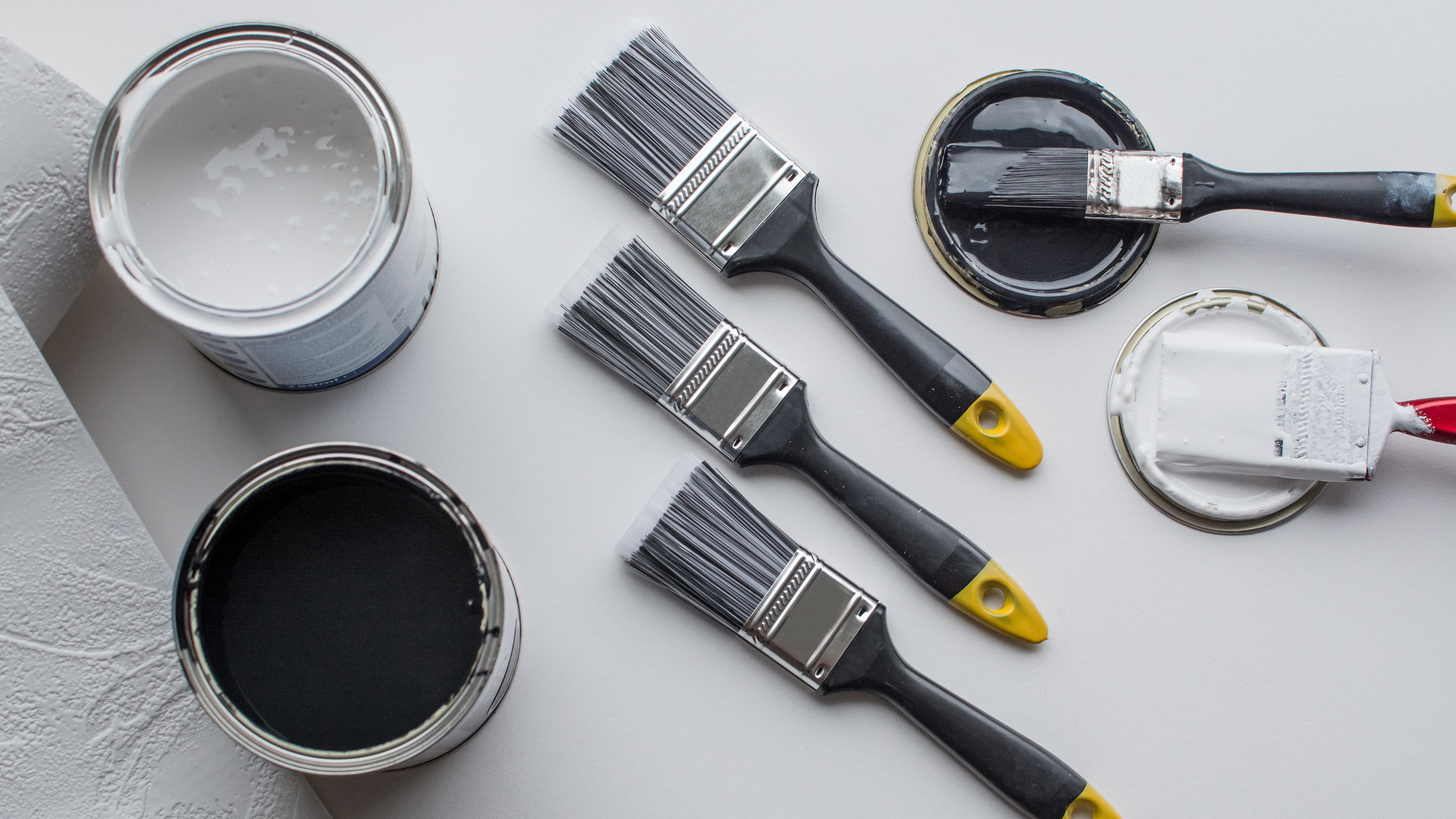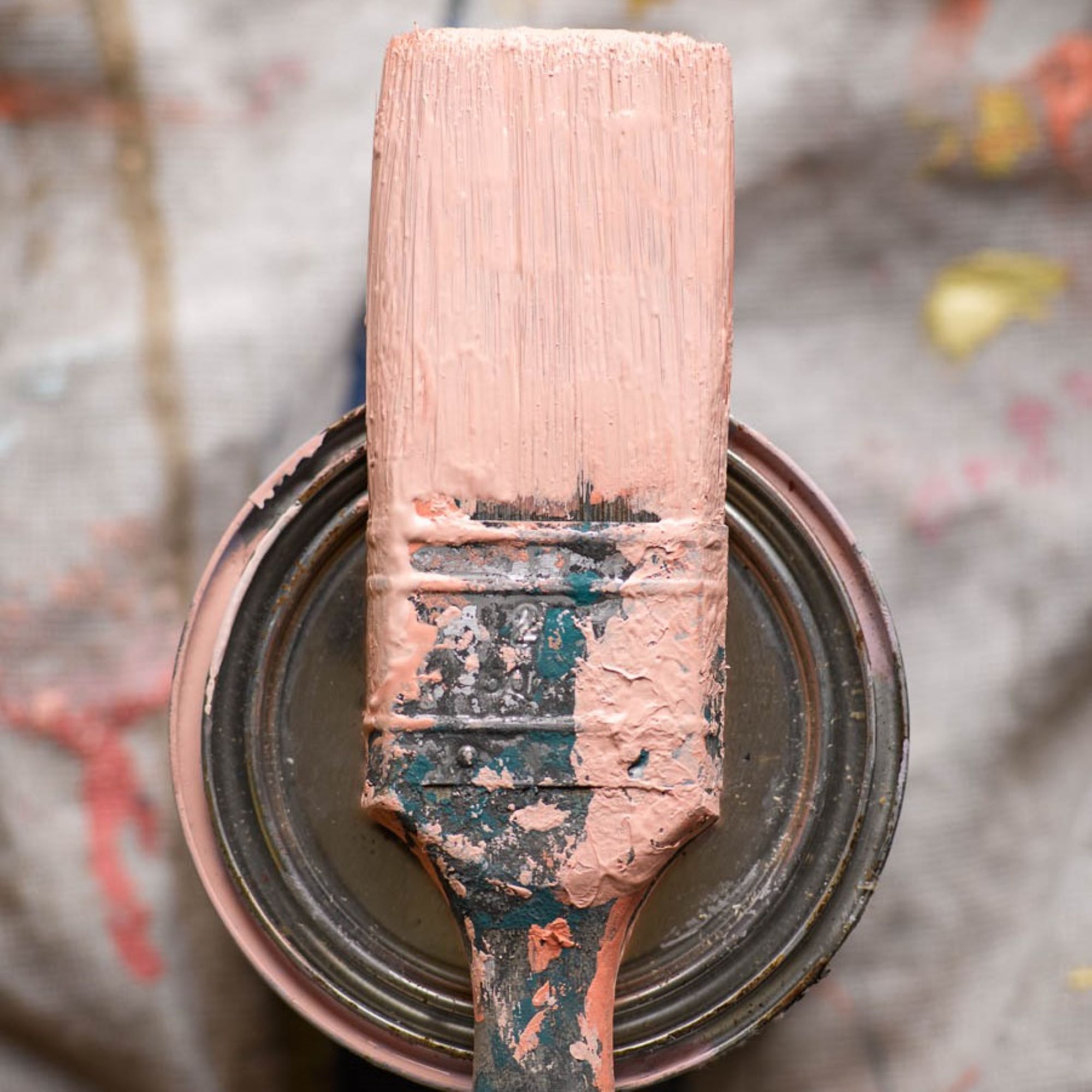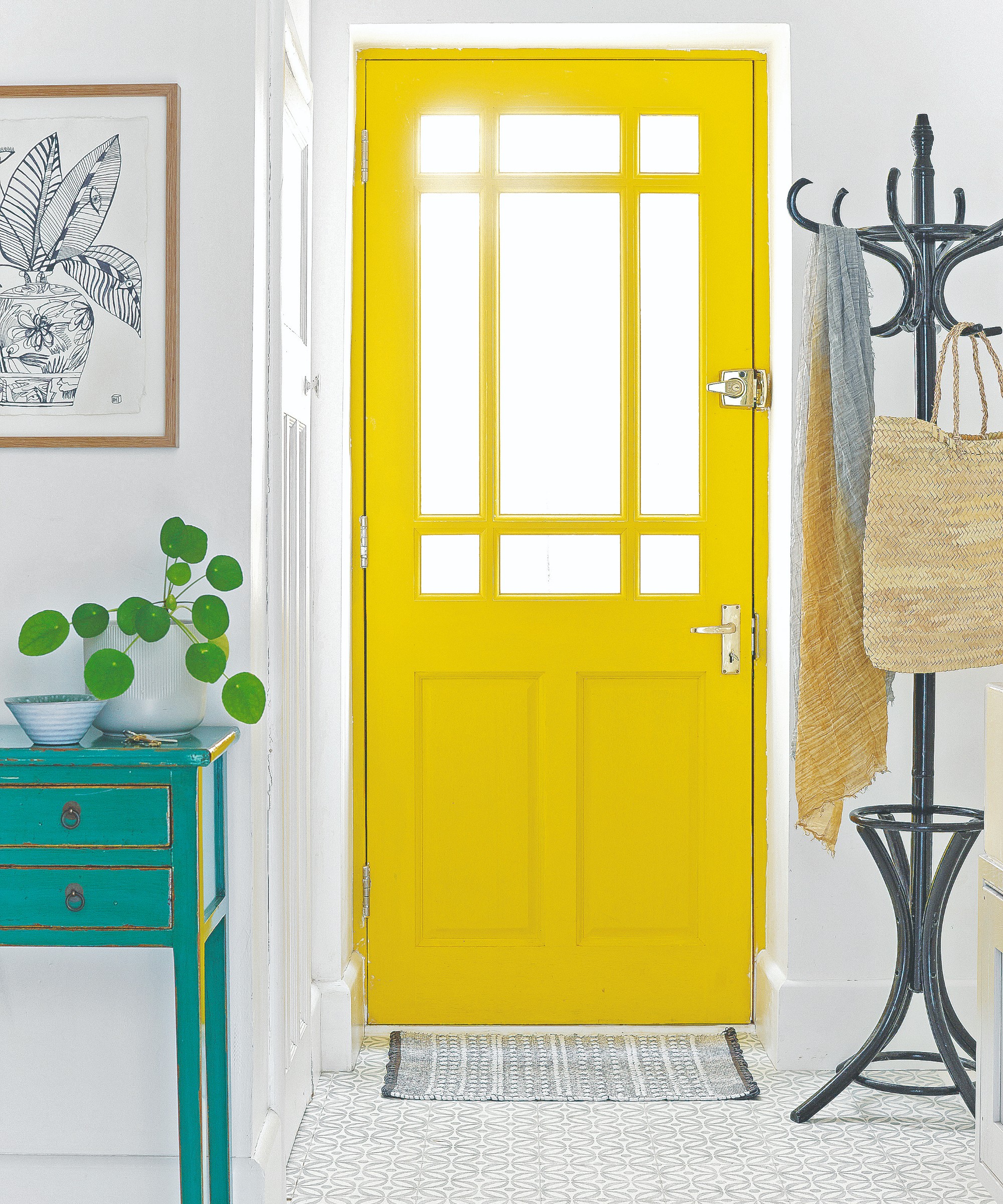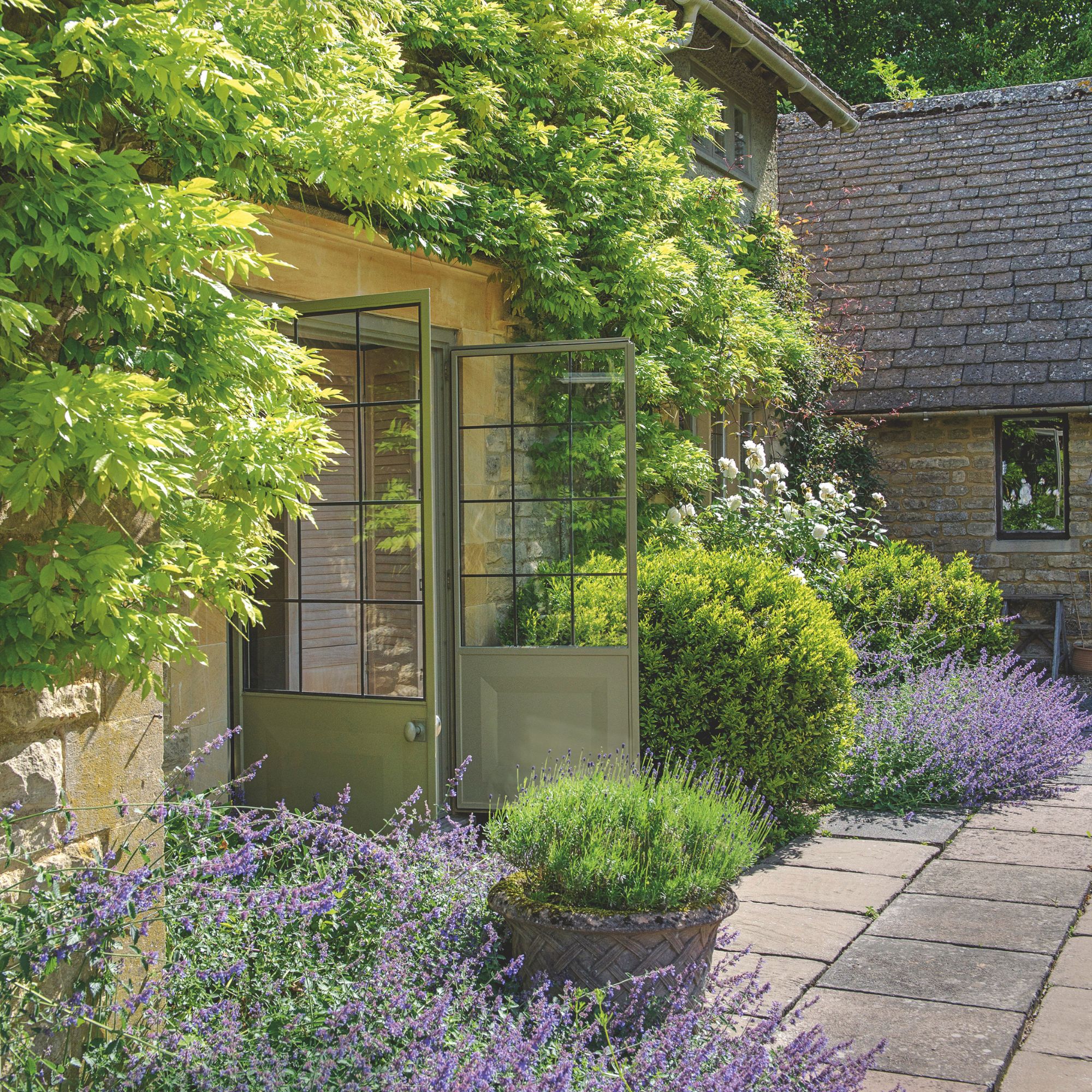How to dispose of paint - 3 easy steps to get rid of leftover paint safely
Clear out your old paint tins with these expert tips


Leftover paint can be something of a nuisance. We know we're probably not going to use what's left in the tin, but we don't want the additional clutter in our shed, garage, or supplies cupboard. The good news is that you can learn how to dispose of paint, safely and easily.
It's important to know the proper way of disposing paint, because it can't just be thrown away with household rubbish. While the best paints tend to have a long shelf life - and there are several ways to reuse leftover paint - sometimes you just know you won't use it again, at which point it's time to get rid.
So, if you're happy with your current paint ideas but wondering how to get rid of the leftovers, we've got you covered. We've asked the experts how to dispose of paint safely, and it's actually a really simple process - you'll just need something to harden the paint before you start, such as sawdust, cat litter, soil or sand.
'It's vital to dispose of paint safely and effectively, in order to protect the environment and prevent safety hazards,' says Gary Jarman, Building and Decorating Expert, Building Shop. 'Liquid paint cannot be accepted by recycling/household waste centres, so the main thing you need to do is wait for the paint to dry and harden before it can be accepted.'
Before learning how to dispose of paint properly, you'll need to get your hands on a couple of essentials first.
1. First, harden it

The first step if you are looking to get rid of old paint is to harden it. If it's tossed in with the household waste when it's still a liquid, it will contaminate other waste (and because of its chemical composition, paint is considered hazardous). So, don't be tempted to skip this step.
'Hardening can happen naturally if you leave it in a colder spot exposed to the elements, but you can speed up the process very effectively by adding sawdust,' says Sophie Smith, Zhoosh Paints. 'Soil, sand and cat litter are other options but sawdust (available on Amazon) is best.'
Mix your sawdust into the paint, and keep adding more until it becomes a crumbly consistency. The sawdust will start absorbing the paint's water, speeding up the hardening process.
Tip: if you can't get your hands on sawdust, soil, sand or cat litter, you can buy specific paint hardeners, like this one for £20.49 from Amazon (it's just a more expensive option).
2. Leave to solidify
'Once you've added your hardener, leave the lid of the can off and wait for the paint to solidify,' decorating expert Gary says.
How long it takes the paint to harden varies on the conditions it's left in (colder temperatures speed up the drying process). It will likely be at least 48 hours, so leave it for a couple of days before checking it.
3. Take it to the tip
Once the paint has hardened, the experts recommend you take it to your local recycling centre. 'While technically you can put hardened paint in with the rest of your household waste, there are different components to a paint tin with handles and labels,' Sophie Smith explains. 'So to be sure you’ll get it broken down and recycled effectively, the recycling centre is what we recommend.'
Most local recycling centres do accept hardened paint, but it's always worth checking before you go. You can find out your local tip's regulations on the Recycle Now website.
Remember, recycling centres will not accept paint that hasn't been hardened, so make sure you don't turn up with liquid in the tins.
Other ways to dispose of paint

There are a couple of alternative methods you can try for how to dispose of paint. If you only have small amounts of paint leftover, you can brush this on to cardboard and leave it to dry. When it's dry, it can go in with household waste. This method isn't recommended for larger amounts of paint though, as it would be very time-consuming.
It's also worth considering donating the paint. 'This avoids creating waste and helps others in need,' Gary says. 'Donate to the likes of friends, family, neighbours or even artists, charities, community projects, and schools. To do this, make sure the paint's in good condition and make sure to reseal the lid before you give it away.'
Community RePaint collects leftover paint and donates it to families, organisations and charities. This is a sustainable way to get rid of paint you no longer need, and help it go to a good cause. Community RePaint have schemes set up in 75 areas across the country, so make sure you have a look to see if they have services local to you.
FAQs
How do you harden paint for disposal?
To harden paint for disposal, you need to combine it with a gritty substance, such as sawdust, soil, sand or cat litter. These materials absorb the water in the paint and speed up the solidification process.
Mix your chosen substance in the paint, ensuring it is well combined. Then, sprinkle some more on top to make the drying process even quicker. It's best to then leave your paint tin with the lid off in a cold area like a garage or shed. You can leave it outside, but make sure the paint has some form of shelter from the elements.
After 48 hours or so, the paint should have hardened. If not, leave it a while longer and it will dry out in its own time.
Can you take paint to the local tip?
'You can only take paint to the local tip once it's dried and hardened,' says Gary from The Building Shop. 'If it's wet, you cannot take it.'
Once paint is hardened, most local recycling centres will accept it, though it's always worth checking first.
Get the Ideal Home Newsletter
Sign up to our newsletter for style and decor inspiration, house makeovers, project advice and more.

Katie has been writing freelance since early 2022, specialising in all things homes and gardens, following achieving a Masters in Media and Journalism. She started out writing e-commerce content for several of Future’s interior titles, including Real Homes, Gardeningetc, Livingetc, and Homes and Gardens. Since then she’s been a regular contributor on Ideal Home’s digital team, covering news topics, how-to guides, and product reviews.
-
 5 most welcoming colours to paint a front door, according to experts and colour psychology
5 most welcoming colours to paint a front door, according to experts and colour psychologySend out the welcoming vibes before the door is even open
By Ellis Cochrane
-
 How and when to fertilise peonies for bigger, brighter blooms, according to experts
How and when to fertilise peonies for bigger, brighter blooms, according to expertsFind out everything you need to know about fertilising peonies and how to boost their beautiful blooms for longer
By Lisa Fazzani
-
 5 fragrant shrubs that will fill your garden with a gorgeous scent this summer
5 fragrant shrubs that will fill your garden with a gorgeous scent this summerAdd an extra dimension to your outdoor space with these scented shrubs
By Kezia Reynolds